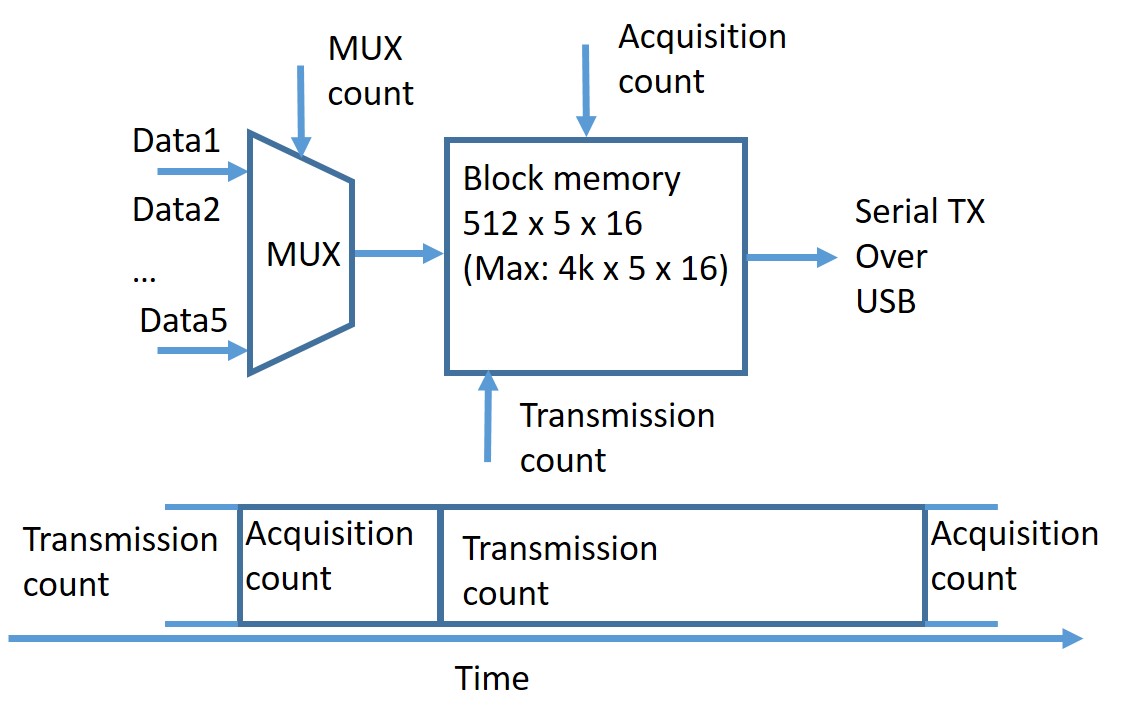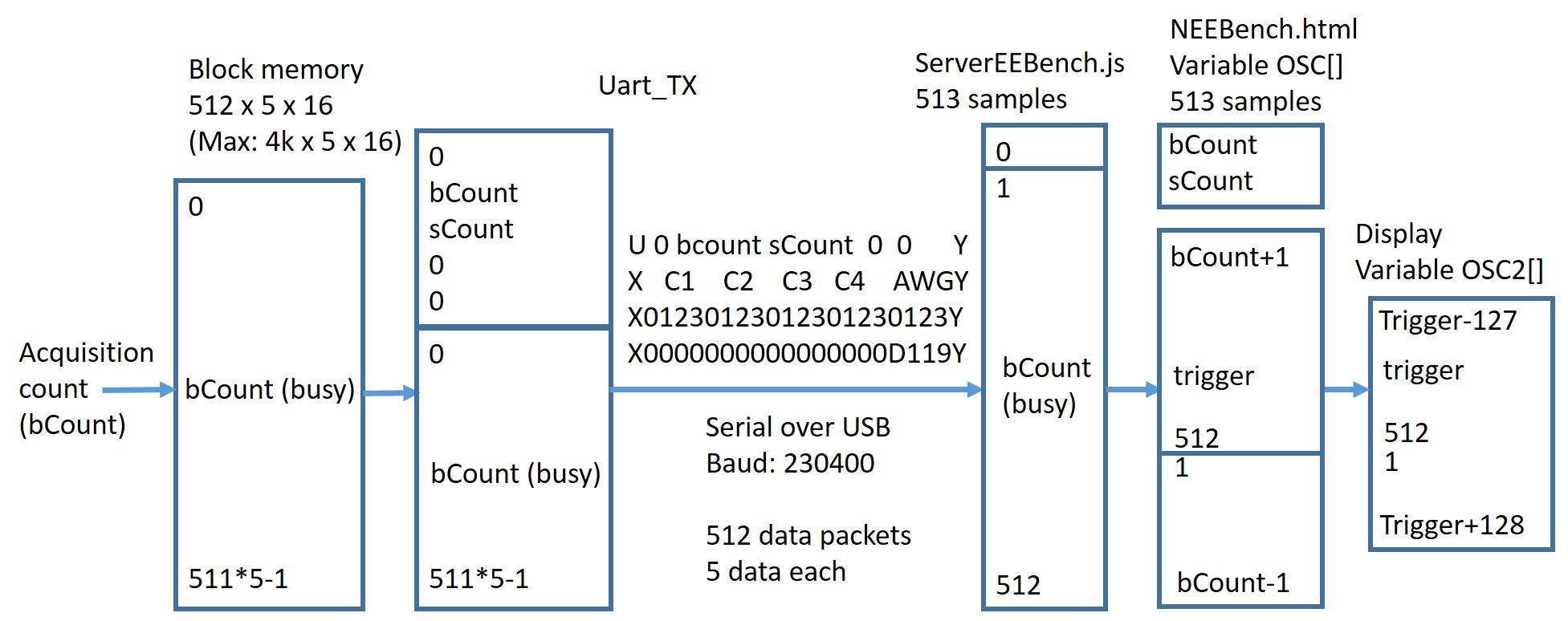
generic(
ADDR_WIDTH: integer := 16;
DATA_WIDTH: integer:= 16
);
In EEBench the process storeMem controls data acquisition.
elsif (rising_edge(CLK) and (readyX = '1')
-- slow clock ??
and (upSample = '1')
) then -- continous cycling through ADC if no transmit
if (tx_busy = '1') then -- transfer started
sCnt := 0;
we <='0';
else -- data sampling
case source is
tx_busy prevents acquisition and memory write during ongoing serial transmission to the PC.